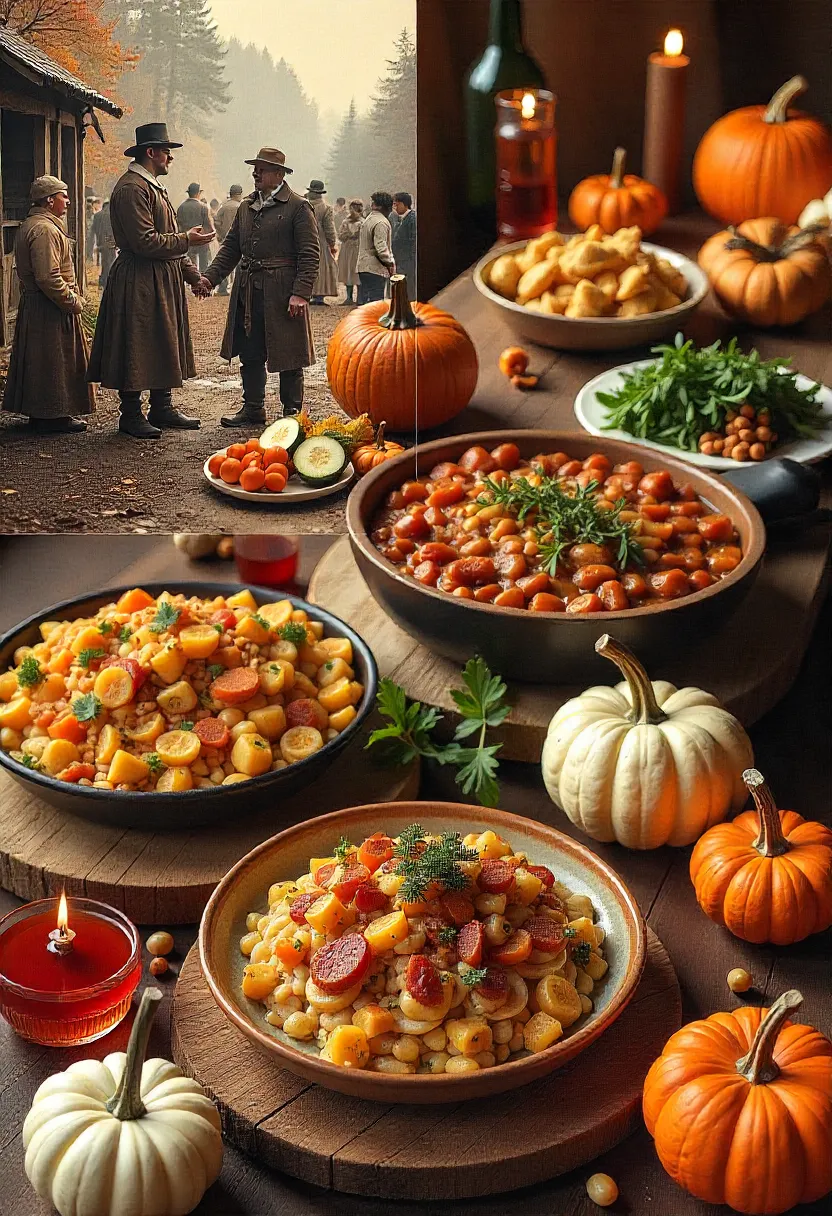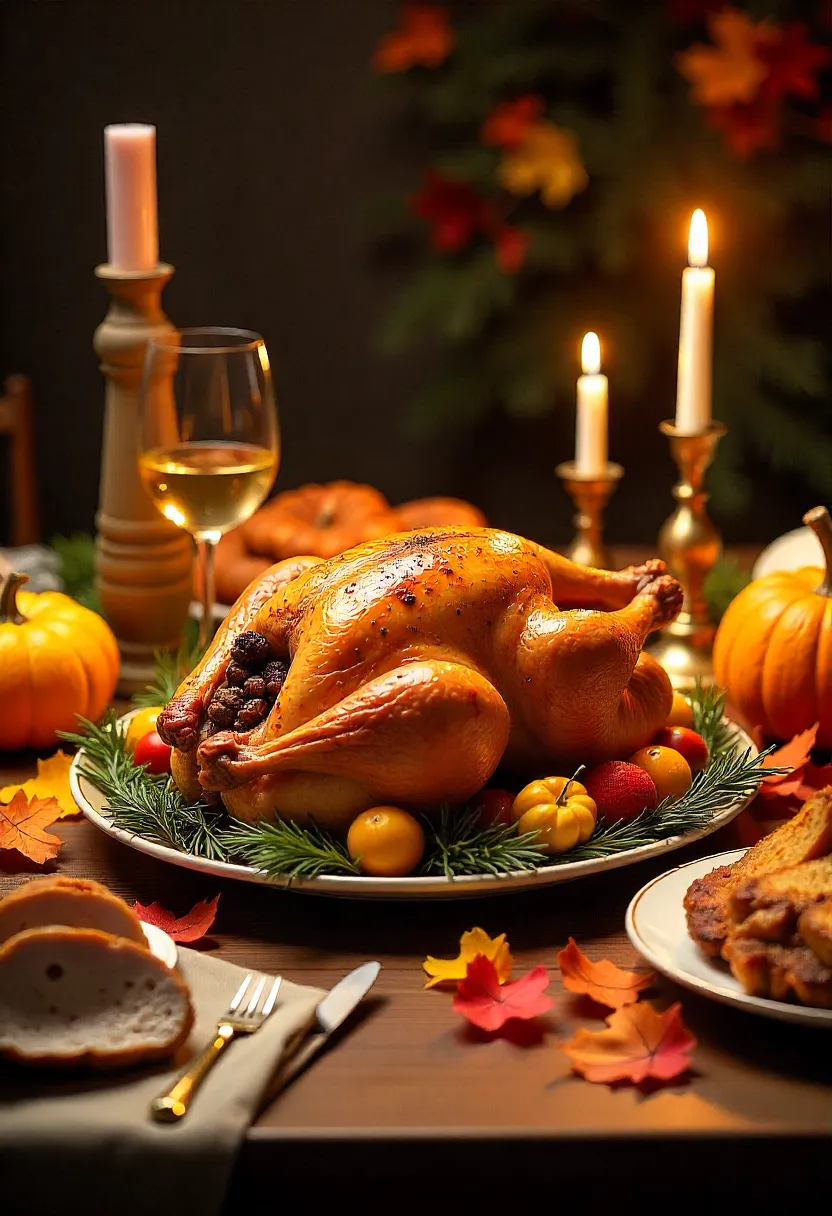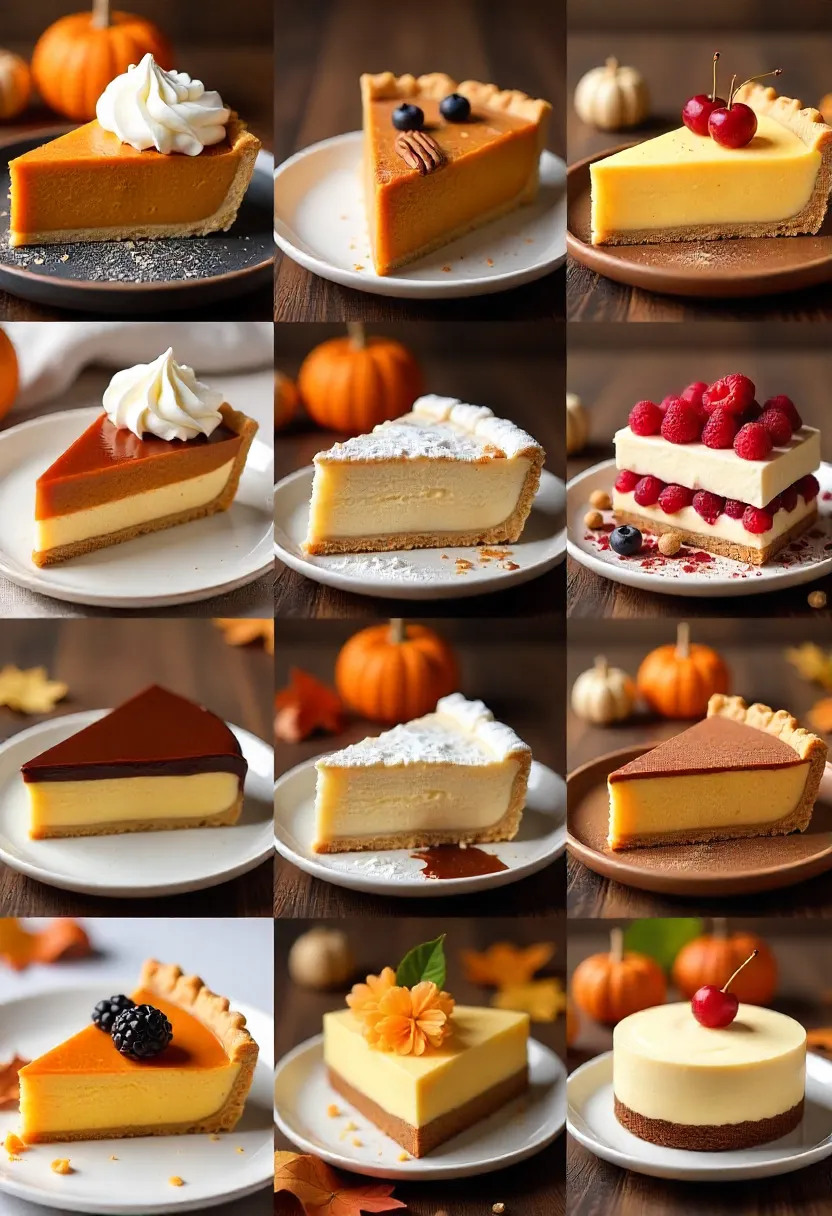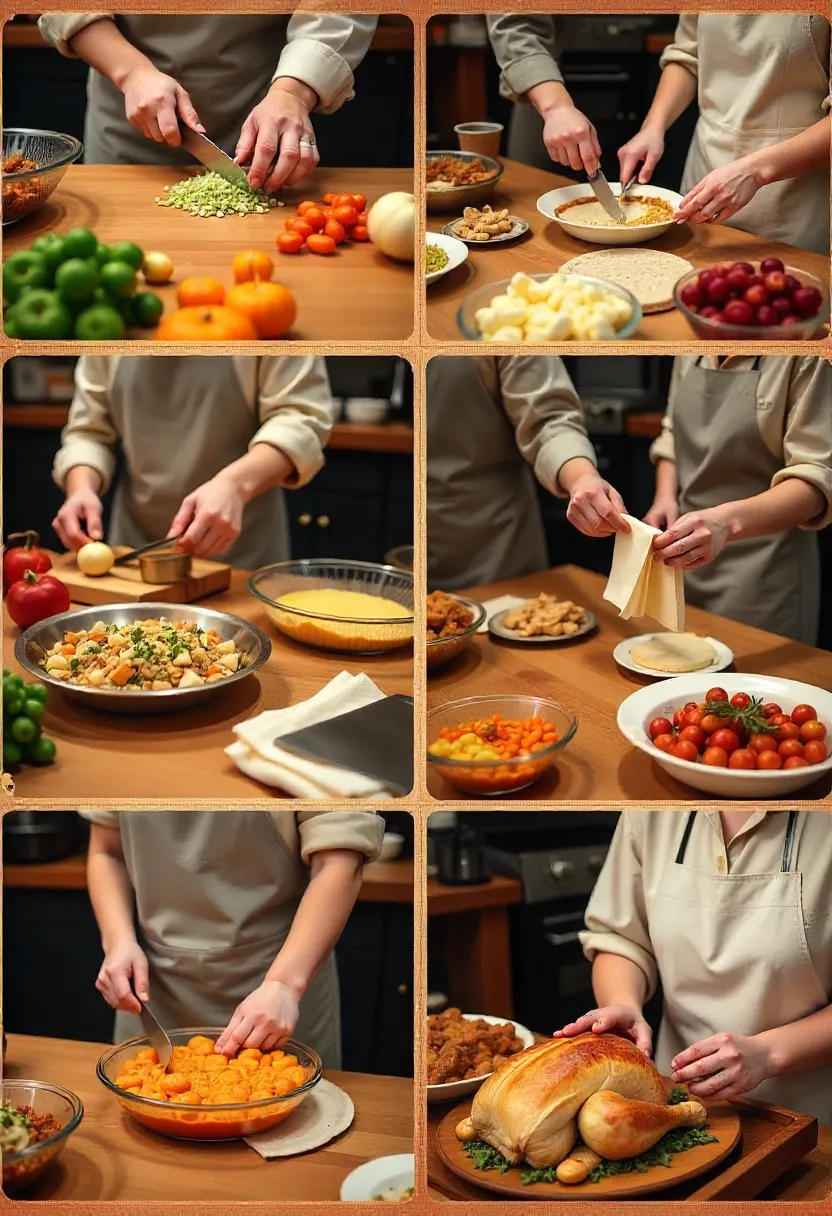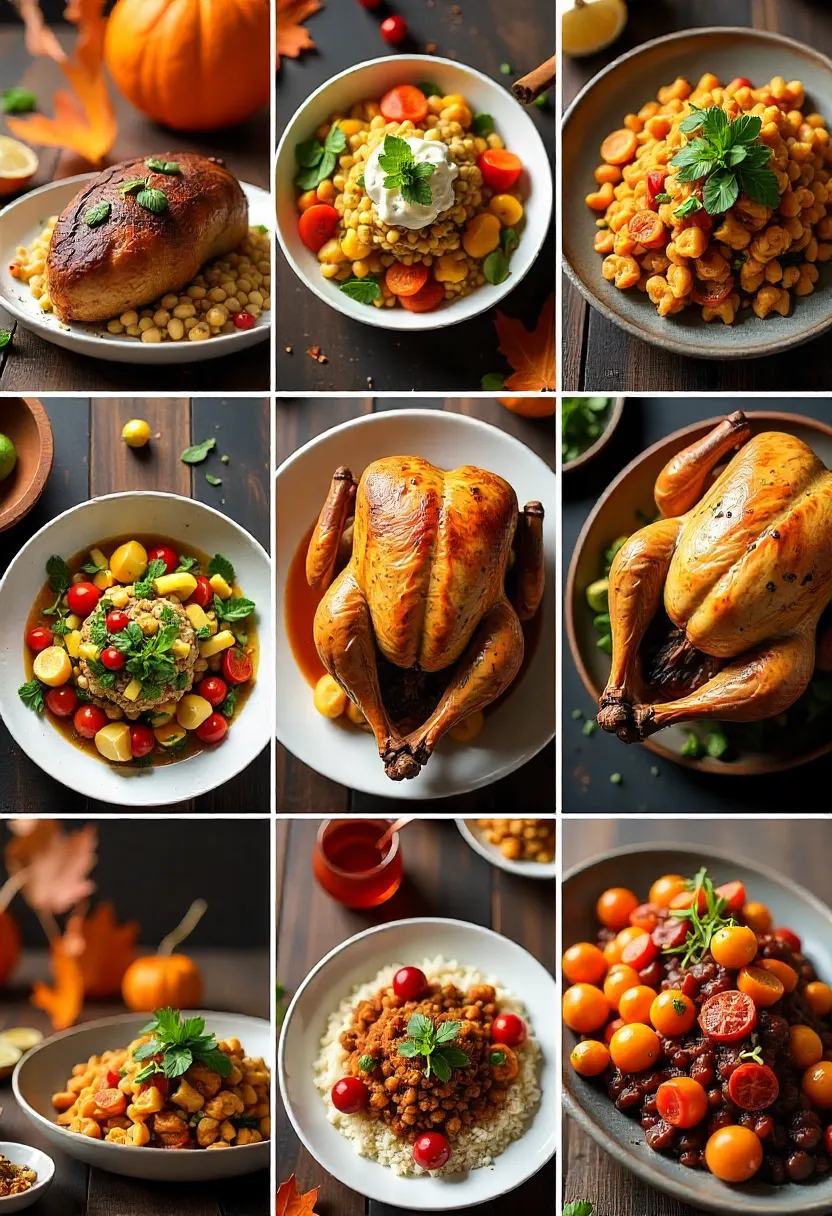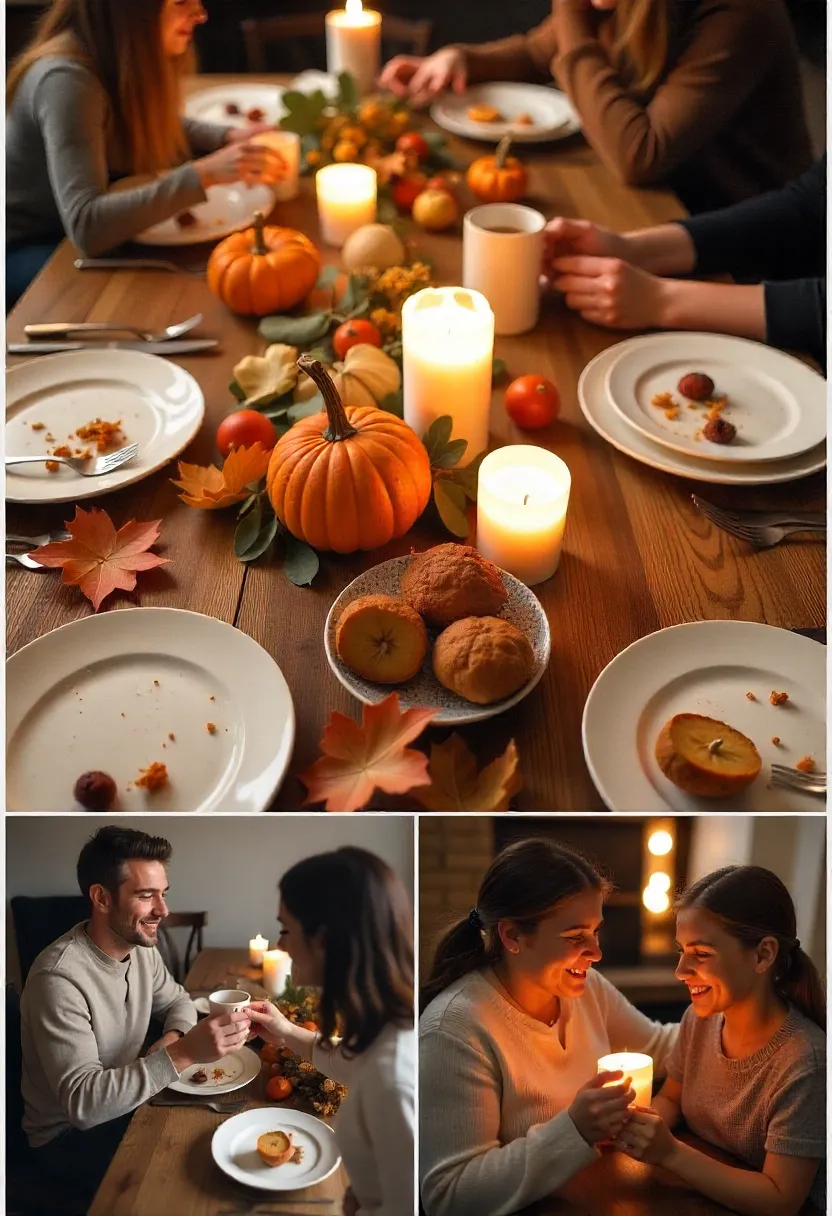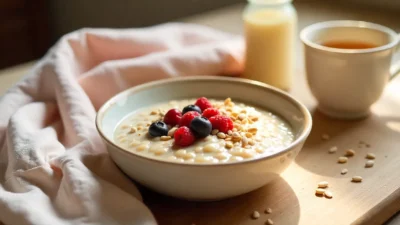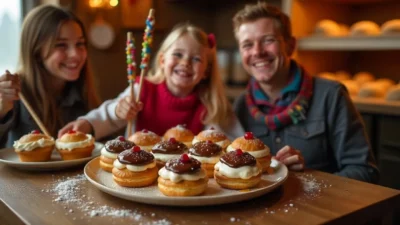Contents
- A Brief Look Back: How Thanksgiving Became What It Is Today 🌾
- The Turkey: A Generous Centerpiece with a Dramatic Personality 🦃
- Where Joy Truly Lives: The Side Dishes 🥔🍞🥕
- The Sweet Finale: Desserts That Bring the Table to a Gentle Pause 🥧🍎✨
- Gathering Around the Table: Stories, Conversations, and the Music of Familiar Voices 🪑🍁
- Planning the Feast: A Dance of Timing, Preparation, and Good-Natured Improvisation 📋⏲️
- A Modern Meal for a Modern World 🌍
- The Heart of Thanksgiving 💛
There are certain moments throughout the year when time seems to gently slow down, allowing us to step outside the usual routines, deadlines, and responsibilities. One of these moments is Thanksgiving dinner, a tradition cherished by many not simply because of the food that fills the table, but because of the stories, emotions, and histories that gather alongside the dishes. Though the holiday may look slightly different in every household—shaped by cultural background, family dynamics, personal tastes, and even the unpredictable events of the year—the essence remains remarkably consistent: we come together, we share, and we appreciate the simple yet profound gift of being present with one another.🦃🍂
Thanksgiving carries with it a certain warmth that cannot be easily replicated. Perhaps it is the comforting aroma of food slow-cooking throughout the day, drifting through every room of the house. Perhaps it is the slightly chaotic kitchen atmosphere, where someone is trying to carve a turkey while another person frantically searches for the missing serving spoon that somehow disappears every single year. Or perhaps it is the emotional familiarity of having people around the table who know our histories, our habits, our quirks, and still choose to sit beside us with affection. In any case, Thanksgiving dinner feels like a soft pause before the colder months arrive, a reminder that despite everything that has changed, there are still moments of continuity, care, and belonging.
A Brief Look Back: How Thanksgiving Became What It Is Today 🌾
While the holiday has evolved over centuries and now carries different meanings for different communities, the shared meal at its center remains a symbol of gratitude, cooperation, and seasonal transition. The earliest harvest feasts were rooted in necessity and survival, celebrating the successful gathering of crops before winter. Over time, as societies shifted and cultures blended, the meal gained layers of flavor—quite literally and culturally. New ingredients entered kitchens, new traditions formed, and families adapted the celebration to reflect who they were and where they came from.
What makes Thanksgiving remarkable is its ability to hold both tradition and innovation at once. Some households replicate the same dishes year after year, believing that memories are best preserved through continuity. Others treat Thanksgiving as an opportunity for culinary exploration, introducing new flavors, techniques, or influences from various cuisines. Both approaches are equally valid, and both speak to a deeper truth: food is a language of identity, heritage, and emotional memory.
The Turkey: A Generous Centerpiece with a Dramatic Personality 🦃
For many, the turkey remains the undeniable centerpiece of the table—golden brown, aromatic, and large enough to feed a small crowd with leftovers guaranteed for days. Yet preparing a turkey is not an endeavor for the faint of heart. It requires patience, planning, and a willingness to negotiate with a bird that tends to have a mind of its own. From the moment it appears in the kitchen—often frozen as solid as a winter sidewalk—there is a sense of ceremony about it.
The process may involve hours of brining, carefully seasoning every inch of the skin, placing herbs under the breast for aroma, tying the legs to ensure even cooking, and basting repeatedly to achieve that ideal crispness. The turkey demands effort, time, and emotional investment, and perhaps this is why it often inspires such pride when brought to the table. The moment it is set down and everyone leans forward slightly, admiring the sight, the cook is rewarded with a quiet but unmistakable feeling of triumph.
But Thanksgiving is not limited to turkey, and the holiday becomes even richer when households choose the centerpiece that resonates with them personally. Some families serve honey-glazed ham, others prefer roast chicken, duck, or goose, and many today prepare vegetarian or vegan centerpieces that are every bit as celebratory. Stuffed squash roasted with aromatic spices, lentil loaves wrapped in herbs, or layered vegetable roasts can carry the same sense of abundance, care, and festivity. What matters is not the specific dish, but the intention behind it: to create something nourishing and beautiful for the people gathered at the table.
Where Joy Truly Lives: The Side Dishes 🥔🍞🥕
While the turkey may hold the spotlight in theory, the side dishes are often the dishes people look forward to most. Thanksgiving sides are where creativity, nostalgia, and culinary personality shine. Each dish carries its own memory and meaning.
Mashed potatoes, for example, can be smooth and buttery, seasoned with garlic and cream, or left slightly textured to evoke a rustic homemade touch. Gravy, warm and silky, connects all the elements on the plate into a single harmonious experience. Cranberry sauce, with its bright tartness, provides a refreshing contrast that awakens the palate. Stuffing (or dressing, depending on regional tradition) can be herb-forward, savory, sweet, dense, soft, or crispy around the edges—but always comforting. Sweet potatoes adorned with marshmallows or candied pecans bring sweetness to the meal in a way that borders playfully between side dish and dessert.
Vegetable dishes also bring color and balance to the table: roasted carrots glazed with honey, green bean casseroles topped with a crisp golden layer, caramelized Brussels sprouts, roasted squash, or corn prepared with cream and spices. Bread, rolls, and cornbread complete the meal, offering warmth and texture, perfect for gathering every last trace of sauce on the plate.
These dishes often hold stories. Someone learned the recipe from a grandparent. Someone adapted theirs after moving to a new region. Someone insists on making a dish exactly the way their childhood home did because it represents continuity. Another person uses the day to try something completely new. In this way, side dishes become emotional landscapes, quietly expressing who we are and where we have been.
The Sweet Finale: Desserts That Bring the Table to a Gentle Pause 🥧🍎✨
Once the main dishes have been served, the laughter grows full and warm, and everyone has reached that stage of leaning back slightly in their chair—hands folded, plates pushed forward, eyes drifting softly across the table—comes the moment that is both anticipated and tender: dessert. The presence of dessert at Thanksgiving does not simply mark the end of the meal, but rather the beginning of a slower, more reflective part of the evening. Conversation deepens, memories emerge, and the mood settles into something gentle, content, and full of affection.
The desserts themselves are often modest in their ingredients yet rich in their emotional resonance. Pumpkin pie, smooth and spiced with cinnamon, nutmeg, and cloves, feels like autumn itself captured in a single slice. Apple pie brings the brightness of baked fruit and the irresistible comfort of warm pastry, its aroma calling to mind childhood kitchens and windows fogged slightly from the heat of the oven. Pecan pie, with its caramelized sweetness and delicate crunch, has a celebratory character that seems almost festive on its own.
And yet, Thanksgiving dessert does not end at the classics. Many households bring personal or cultural influences to their sweet offerings—berry tarts, chocolate cream pies, hazelnut cakes, homemade cookies dusted in powdered sugar, or lighter desserts such as baked pears drizzled with honey and spice. Some families introduce desserts from global culinary traditions, letting the table reflect ancestry and identity: flan, mochi, baklava, tiramisu, rice puddings, or sweet custards gently set and chilled.
What makes dessert at Thanksgiving so meaningful is not simply flavor or tradition, but the emotional pace it introduces. This is the moment when everyone finally stops rushing. No timers are going off in the kitchen. Nothing needs to be stirred or checked or plated. People can settle completely into the moment—laughing gently, recalling stories from childhood, sharing future plans, or simply letting the warmth of the day settle into their bones.
In a world so driven by productivity and constant motion, these quiet pauses are treasures.
Gathering Around the Table: Stories, Conversations, and the Music of Familiar Voices 🪑🍁
The Thanksgiving table is more than a place for eating; it becomes a kind of shared stage where stories unfold naturally. Conversations flow in waves: sometimes animated and filled with energy, sometimes soft and reflective. There are often interruptions, overlapping comments, playful teasing, affectionate glances, and perhaps even a few emotional moments that appear unexpectedly but feel welcome nonetheless.
Every household has its familiar cast of characters. There may be the storyteller who always brings a tale from the past that everyone has already heard—but no one really minds hearing again. There is often someone who jokes about wanting to eat dessert first, another who wants to photograph every dish before anyone touches it, someone who carefully picks herbs from the garnish for aesthetic perfection, and someone who simply loves to be surrounded by people, quietly soaking in the warmth.
Sometimes, there are poignant moments too. A seat left empty for someone who has passed, or a heartfelt toast spoken by someone who is usually reserved. These moments remind us that Thanksgiving is not only about joy—it is also about acknowledgment, remembrance, and honoring the journey that brought everyone to this table. In that way, Thanksgiving becomes a deeply human gathering: imperfect, layered, emotional, but full of meaning.
Even when occasional disagreements arise—whether about traditions, food preferences, or more heated topics like politics or lifestyle choices—these too become part of the shared story of the day. Families are not perfect, nor are they meant to be. Thanksgiving offers a space where differences and similarities coexist in the same room, tied together by history and affection rather than by perfect alignment.
The table holds all of this—the joy, the laughter, the cracks, the history—and transforms it into something whole.
Planning the Feast: A Dance of Timing, Preparation, and Good-Natured Improvisation 📋⏲️
For those hosting Thanksgiving, the preparation itself becomes an experience—a mixture of anticipation, creativity, and occasionally, mild chaos. There is something almost theatrical about planning a meal that involves multiple courses, ingredients of diverse textures and cooking times, and guests who arrive with varying appetites and expectations.
Some people begin days in advance, preparing doughs, chopping vegetables, organizing serving dishes, and writing down timelines. Others prefer a more relaxed and spontaneous approach, letting the meal take shape as the day unfolds. And both methods, in their own way, can produce a beautiful and successful dinner.
A few gentle strategies, however, tend to support a smoother holiday:
- Prepare what you can ahead of time, especially desserts and sauces, which often taste even better after resting.
- Accept help, even if it means letting someone fold napkins in their own unique (possibly questionable) style.
- Plan serving dishes and utensils beforehand, so that the gravy does not end up in a cereal bowl purely out of necessity.
- Give yourself permission to adapt—if the turkey cooks a little faster than expected, or if a side dish needs more time, the dinner will still be wonderful.
- Set aside moments to rest, breathe, laugh, and enjoy the process.
In truth, the imperfections that occur during preparation often become part of the most beloved memories. The year the pies didn’t set quite right, the year the oven heated unevenly, the year the dog ate the rolls before they reached the table—these stories live on for decades, sometimes becoming the heart of family folklore. There is joy in the effort, not only in the result.
A Modern Meal for a Modern World 🌍
Thanksgiving today is celebrated by people of diverse backgrounds, dietary needs, and cultural traditions, and as a result, the meal has grown in creativity and inclusiveness. Vegetarian and vegan centerpieces are no longer considered unusual but have become celebrated alternatives. Gluten-free breads, dairy-free desserts, and plant-based gravies offer a place at the table for everyone, allowing the holiday to reflect more compassion and flexibility.
Additionally, many families now incorporate flavors from cultural heritages that may not have been part of earlier generations. For some, Thanksgiving includes Latin American spices, Asian-inspired glazes, Middle Eastern grains, African seasonings, Mediterranean vegetables, or Caribbean marinades. Rather than detracting from tradition, these influences enrich it, allowing the table to tell the story of the family’s journey—where they have been, where they are, and where they are going.
What remains constant is not the menu, but the meaning: gratitude, gathering, nourishment, and love.
The Heart of Thanksgiving 💛
When the plates are cleared, the candles burn low, and conversation settles into a comfortable hum, the essence of Thanksgiving lingers in the air like the scent of cinnamon and roasted herbs. The day reminds us, in a world that is often fast, loud, uncertain, and overwhelming, that we can still make time to connect—to sit, to listen, to share, to simply be with others in a space of warmth.
Thanksgiving is not defined by perfect food or perfect circumstances. It is defined by the willingness to show up. To say, “I am glad we are here together.” To recognize that even when life is complicated, there is beauty in simple moments of togetherness.
Because in the end, what we carry with us long after the dishes are washed and the leftovers have been stored is not the flavor of the gravy or the exact crispness of the turkey skin—but the memory of being gathered with others, of feeling seen and included, and of offering gratitude for the love that brings us to the same table.
And that, truly, is what makes Thanksgiving beautiful. 🧡🍂


